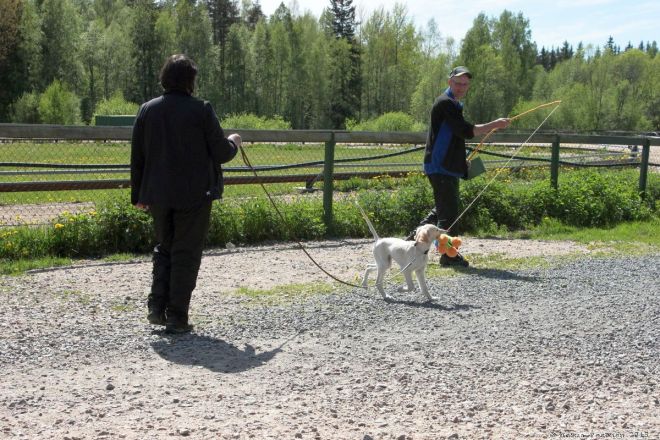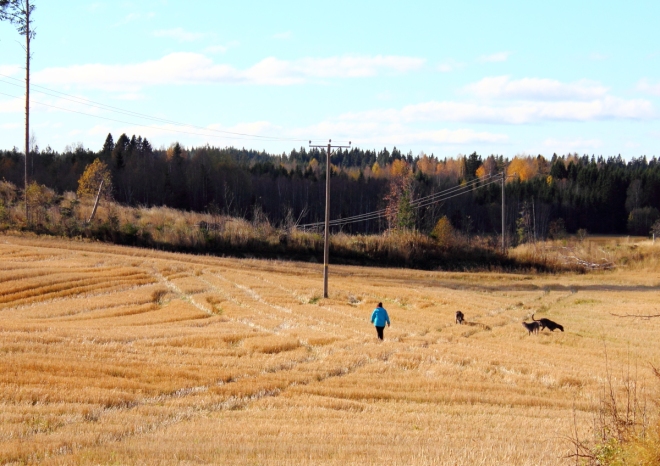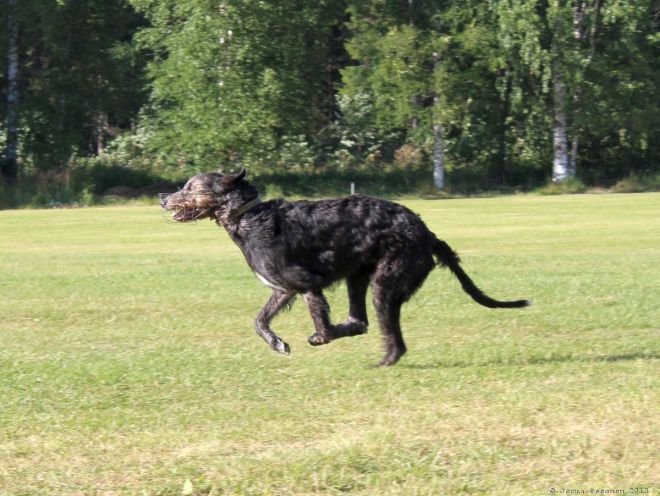Training a lure coursing dog begins from the puppy bin. No, really. They do it by themselves, fighting for their food in the form of getting to the mommy’s nipple first. The ones with the most ‘fighting spirit’ will be the ones, who push their litter mates aside, rushing to the milk bar.
I’m not saying this means that the ones that are always first on the feeding are the ones who will always win in the lure coursing. Just pointing out that they have the fighting and winning deeper in them. As an example of this, our first male who became European champion, was the runt of the litter, the one no-one expected nothing of.
However, in our breed of gentle giants, the fighting and winning traits have been deliberately bred out. Of course, when you have an extremely big dog with quite substantial muscle mass, you want to be sure that even the lighter owner can handle the dog’s urges and instincts.
But the instinct is there. It’s the basis of survival for wild dogs and wolves, so it cannot be bred out totally in the domestication process. It’s like hick-ups for us human, a constant reminder of our ancestral history in the oceans.
As mentioned earlier, even the runt of the litter can become a decent lure coursing dog. I would presume that it goes with racing, too. It just requires more work and dedication from the owner, something that is not too common in our giant, grey breed.
The actual training, in which the owner is crucial contributor, begins the moment the puppy comes home. It is all play and no work, even though this play prepares for the work. Play tug of war. Play with cat lure, you know, the stick with feathers at the end. PLAY with the puppy.
The main point is to make this fun. And rewarding. When the play is at its funny peak, STOP. Let the puppy enjoy it’s hard earned reward. The best would be to connect the play with food reward: give the puppy something especially good from the lure or toy, just to give her/him the idea.
I cannot emphasize too much the fact that Irish Wolfhounds bore quickly, so try not to stretch it. Just few tugs and thanks.
Later on, when the puppy starts to run in the yard, your best friend should be rod lure. A fishing rod or broom handle with a short rope attached to lure. Few round pulls to get the puppy chase the lure, stop and play with the puppy. To enhance the food connection, try to stop the lure to a spot where you have put some treats, or give the treats to the puppy through the lure.

Young Saluki pup pulling on rod lure. Note the plushy toy as lure!
Again, only few short exercises and only after the puppy has played with something else. This is to ensure that the puppy doesn’t start with cold muscles, to avoid injuries to the muscles and soft tissues.
The only thing to avoid, really, is overdoing it. The smaller the pup, the shorter the ‘exercises’. You should get to know the limits of the puppy and not exceed them, yet. Time for overextending comes later.
So, play, have fun and learn your dog and her/his demeanor. Have a nice weekend!




